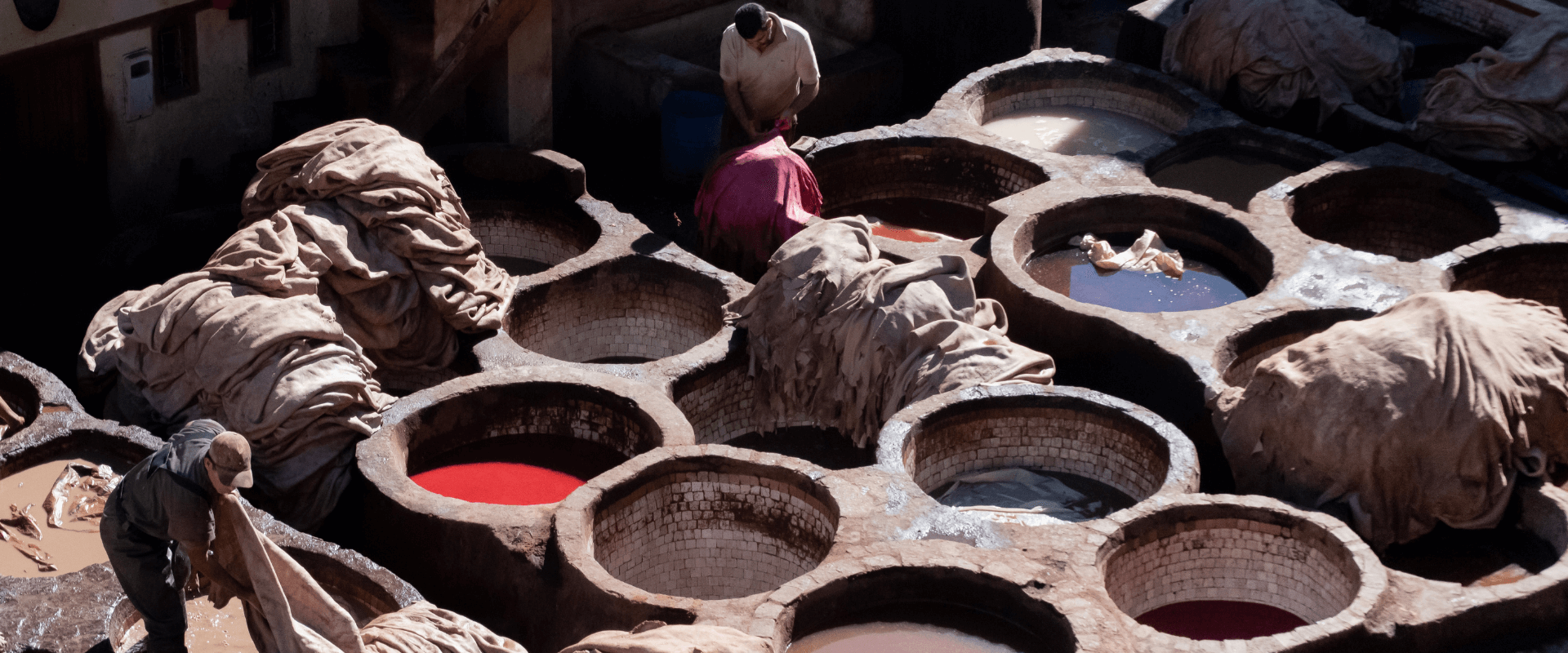When we think about the negative impact of the fashion industry on the environment, the first things that come to mind are overproduction, waste or CO2 emissions. But that’s omitting the often-overlooked consequences of fashion’s colouring processes. In this article, find out about the environmental impact of dyes in fashion, and the climate-friendly alternatives that exist.
Here are the 3 main environmental impacts of the fashion industry's dyeing processes at a glance:
- Water waste
- Chemicals in groundwater
- Heavy metals contamination
Environmental impact of dyes in fashion
We all want more colour in our lives - and so we seek to add more colour to our wardrobe. And it’s not to be neglected: colour is actually one of the most important drivers of our shopping decisions! After all, colour is not only a means of self-expression and joie de vivre, but it is also the first thing we notice about a piece of clothing. Even before we can touch a garment or try it on to check its material durability and fit, the colour is the first thing we notice.
That said, colourful clothing comes at a high price - not necessarily for our wallets, but rather for our environment. Indeed, the fashion industry is responsible for 20% of the world's water pollution. Dyeing techniques contribute heavily to the climate crisis and pollution. So instead of making the world a more vibrant place, our love for colourful clothes is making the world a duller, more toxic and more polluted place. Why? Because of these 3 environmental impacts of dyes in fashion.

1. Water waste
One of the biggest environmental impacts of dyes in fashion is the waste of vital fresh water. According to the Ellen MacArthur Foundation, the fashion industry uses around 93 billion cubic metres of water every year - enough to fill 37 million Olympic swimming pools! Dyes win the gold medal for water waste! This makes dyeing processes one of the most polluting and energy-intensive parts of our clothes. As an example, let's take a look at the production of a pair of jeans.
According to the United Nations, about 7500 litres of water are used to produce a single pair of jeans - from the cultivation of the raw cotton to the finished product. To give the jeans their blue colour, the yarn or fabric is dunked several times into huge vats of synthetic indigo dye. After dyeing, the denim is treated with more chemicals and baths to make it softer and more textured. And if you're a fan of the artificially aged look, we got even worse news for you: the faded denim look requires even more chemical baths, including acids, enzymes, bleach and formaldehyde.
But blue jeans are not the only culprits of the fashion industry. Conventional textile processing methods use up to 2000 different chemicals. Among them, toxic substances like mercury, formaldehyde or chlorine. Ma Jun, one of China's leading environmentalists, says:

2. Chemicals in groundwater
Once factories are finished with the water and energy-intensive dyeing processes, the cheapest way to dispose of the unusable, chemical-polluted wastewater is to dump it into nearby rivers and lakes. As a result, thick, ink-like water flows through the rivers surrounding garment factories in Asia -- a toxic soup of chemicals left behind by the fashion industry's synthetic dyeing processes, seeping into the Earth's water systems and soils.
Although not all of the chemicals and solvents used are hazardous, 72 toxic (and life-threatening) chemicals have been identified in the textile industry as posing a threat to our ecosystems. Dyes accumulate in the waters to such an extent that light can no longer penetrate to the surface, which impairs the ability of plants to photosynthesise. This lowers the oxygen content in the water, leading to the death of aquatic life and plants.

3. Heavy metals
If toxic chemicals weren’t enough already, dangerous heavy metals are also used in the dyeing processes. After being disposed of, these heavy metals enter our food chain through the irrigation of crops. For example, cadmium, lead and copper, which are found in dyes and pigments in clothing, accumulate in our bodies and can damage organs and our central nervous system.
Heavy metals can also increase the risk of various types of cancer, acute illnesses and skin problems. For example, chromium VI, mercury and cadmium can cause cancer. While the use of these heavy metals is strictly regulated in the EU, on a global scale, heavy metals in fashion are a real threat to human health.

Climate-friendly alternatives
To reduce the environmental impact of dyes in fashion, a more eco-friendly alternative is to dye clothes with bio-based dyes only. There are now a number of natural dyes based on plants, algae and even bacteria. Natural dyes may be less flashy, but they are far more respectful of the environment. Otherwise, dyes can also be obtained from by-products such as molasses. In any case, dyeing processes without chemicals, closed water systems and recycling of waste water are better alternatives for (slow) fashion brands to use, to avoid those 3 major environmental impacts of dyes in fashion.
That’s the reason why at SANVT, we dye all our fabrics without harmful chemicals or heavy metals. Not only that, our facilities have closed water loops and recycle 99.9% of all wastewater produced. Read more about our initiatives for more sustainability in fashion here.

